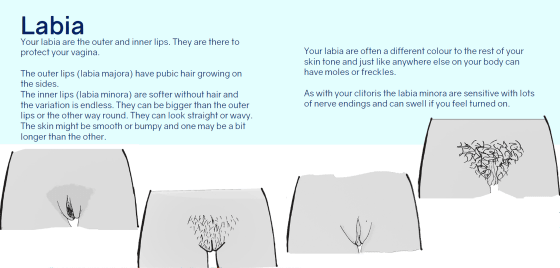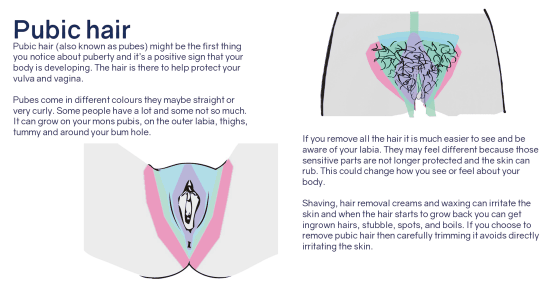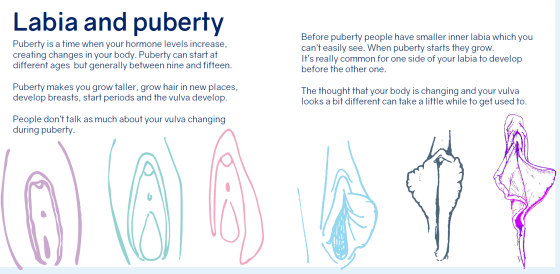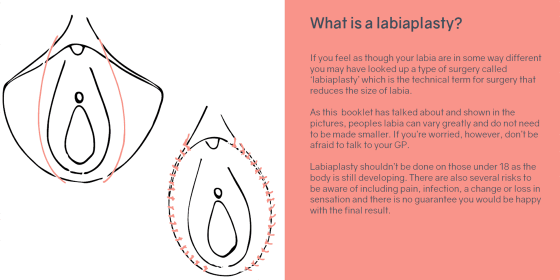A guide to how the genitals of adolescent girls develop

by
Cosmetic surgery on female genitals called ``designer vagina'' costs a lot of money and experts have pointed out that it is ``dangerous.'' However, the surgery called ``labiaplasty'' is actually performed, and according to a survey by the British National Health Service , between 2015 and 2016, more than 200 girls under the age of 18 and 15 and under were treated. More than 150 girls have undergone labiaplasty in the UK. Brook , a charity that supports sexual health and well-being for people under 25, has written about how female genitals change during adolescence as part of their sex education. The guide has been published.
So_what_is_a_vulva_anyway_final_booklet.pdf
(PDF file)https://www.brook.org.uk/data/So_what_is_a_vulva_anyway_final_booklet.pdf
Girls' guide to what a 'normal' vulva looks like - BBC News
http://www.bbc.com/news/health-43373807
The booklet called 'So what is a vulva anyway?' starts with an explanation of the vulva itself. The vulva does not include the anus or vagina, but refers to areas such as the clitoris and labia.

It is difficult to understand because we rarely see other people's vulva, but the shape of the vulva varies from person to person, and it is difficult to determine what is a ``normal vulva''. The vulvas seen in pornography are image-processed using Photoshop, etc., so relying on pornography will create a false image.

The size of the clitoris also varies.

There are labia majora and labia minora in the vulva to protect the vagina, but the labia minora can be straight, wavy, or larger than the labia majora, and there are many variations depending on the person.

The growth of pubic hair during puberty is a sign of physical growth. Pubic hair also varies greatly from person to person, including color, amount, and whether it is curled or straight. Shaving all your pubic hair reveals your sensitive areas, which can change the way you feel about your body. There were also instructions on how to shave pubic hair.

People don't often talk about how the vulva changes during adolescence. According to Brook, women before puberty have small labia minora, which develop as puberty begins. At this time, both labia do not develop at the same pace, and sometimes only one side develops more.

If you feel uncomfortable talking to your friends or parents, you can talk to your doctor, insurance doctor, Brook specialist, etc. If you consult a specialist near you, you may receive a guide like this or information on the internet, but if you still have problems, you may want to see a counselor or an obstetrician and gynecologist who is an expert in vulva care. That's what he said.

Regarding the surgery called labiaplasty, which reduces the size of the labia, the guide states that the shape of the vulva varies from person to person and there is no need to reduce the size of the labia. However, if you are still concerned, it is recommended that you first see

Louise Williams from University College Hospital, one of the guide's creators, said: 'This educational resource will help young people understand how their own vulvas develop, especially 'We hope this guide will help reassure girls that vaginas come in all shapes and sizes, and help those concerned about how their vulva looks and feels.' I hope people will know where to go if they need help.'
Related Posts:
in Note, , Posted by darkhorse_log







